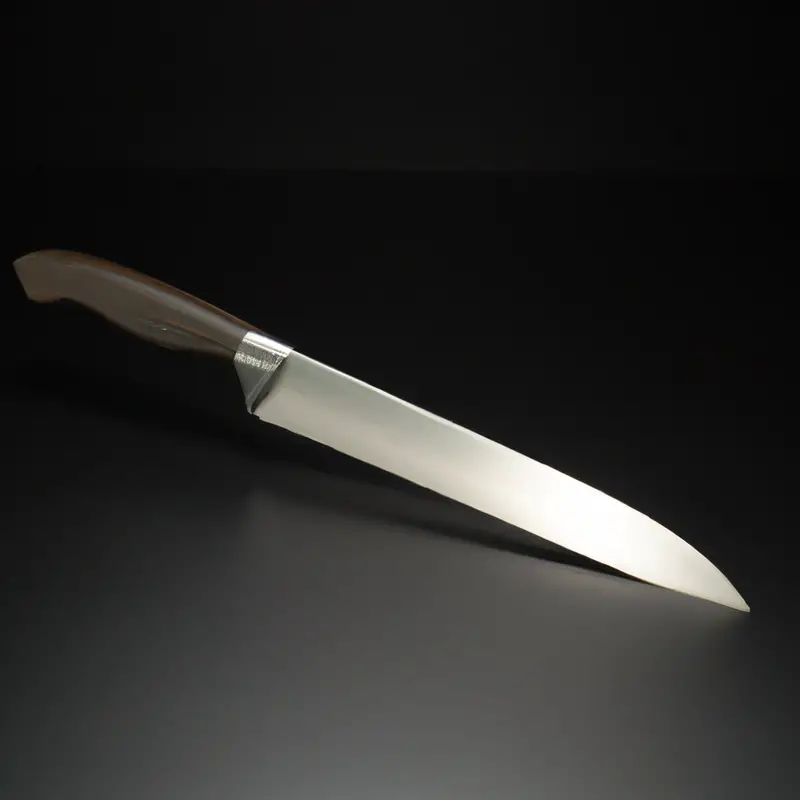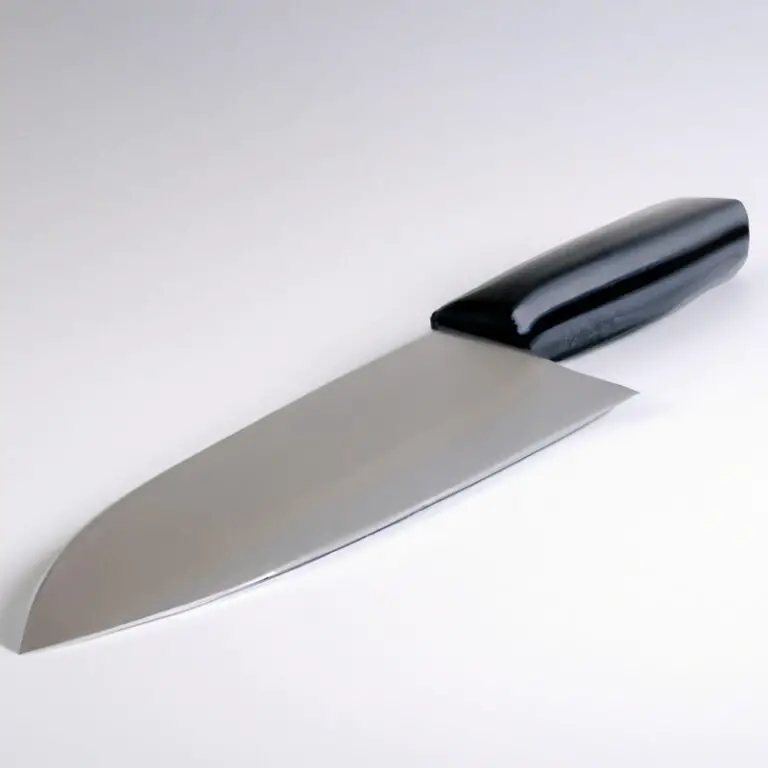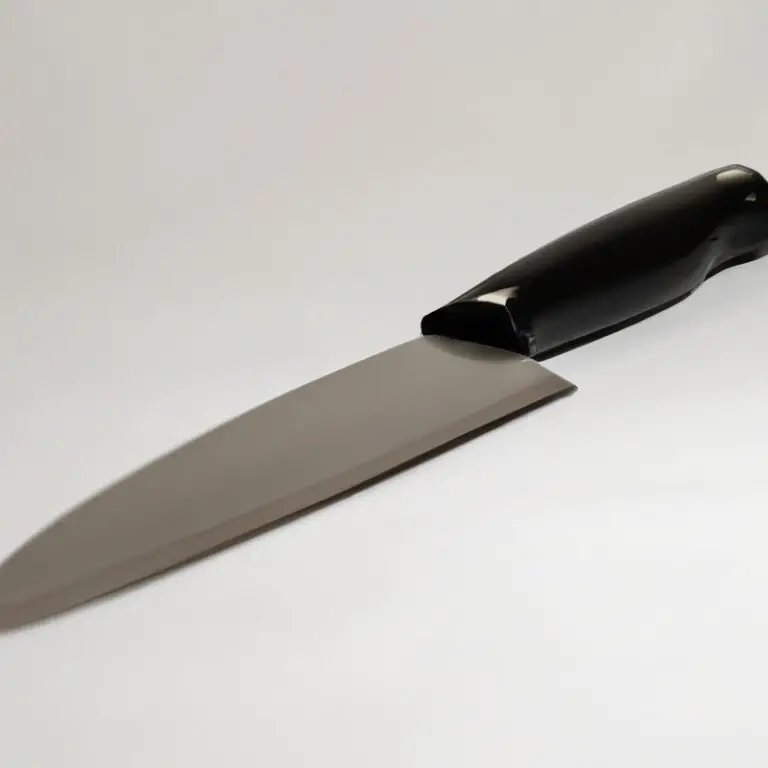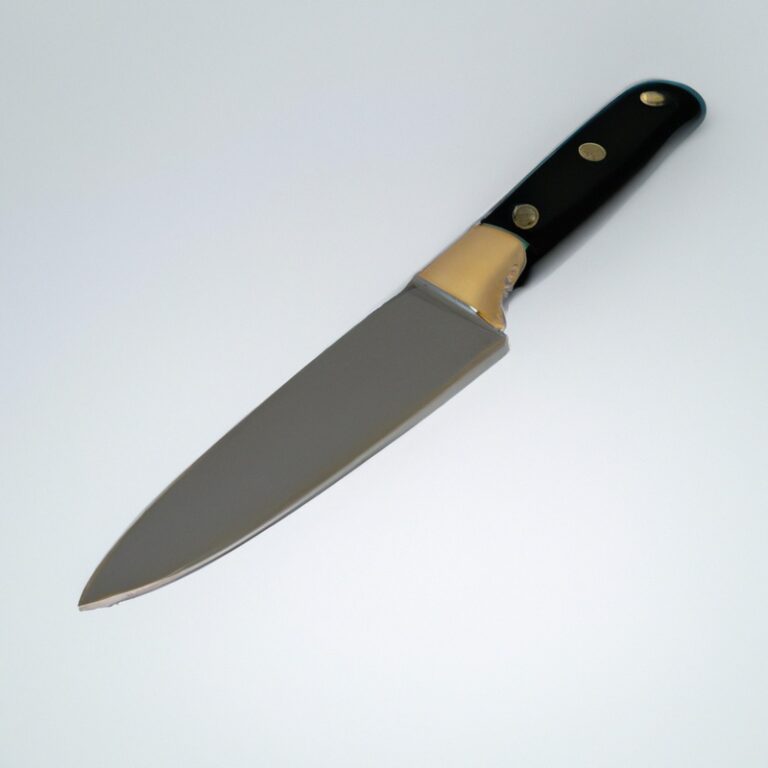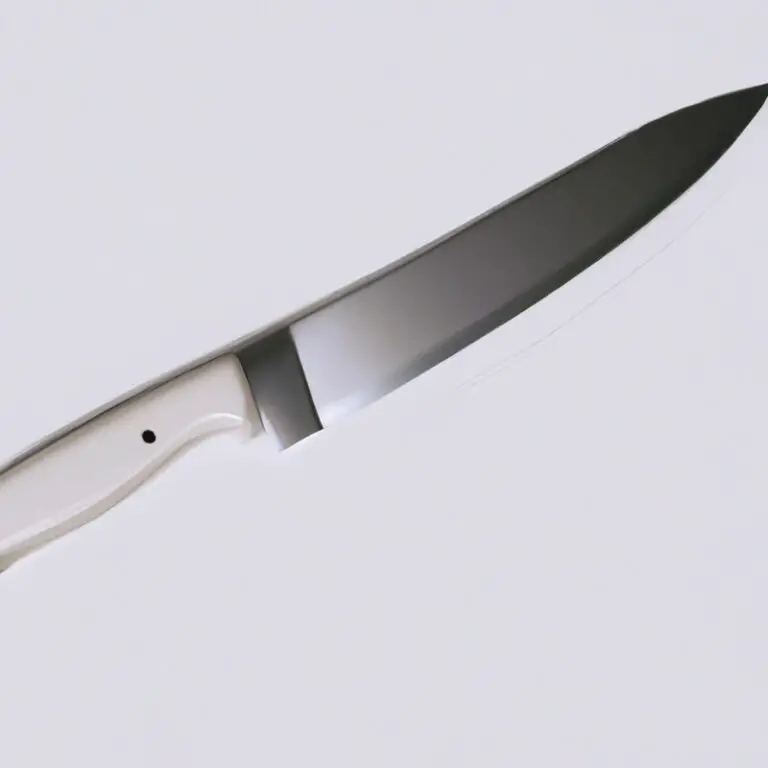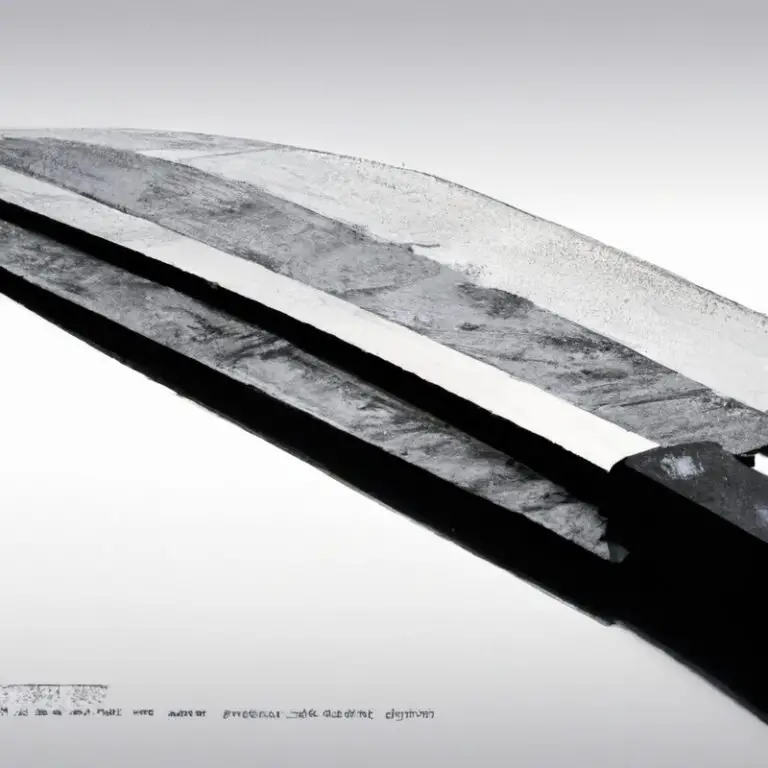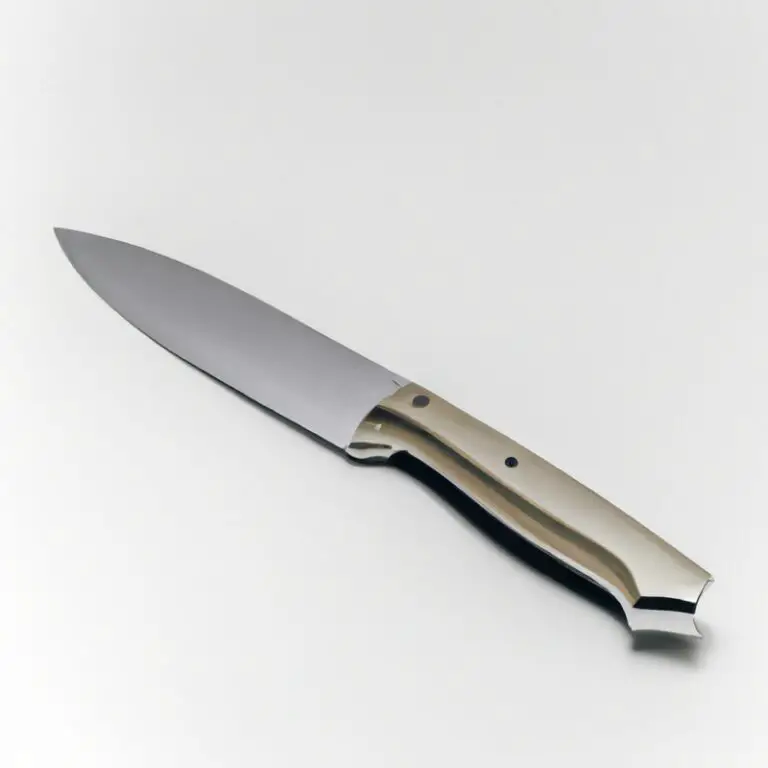What Are The Advantages Of a Chef Knife With a Hammered Finish? – Expert Insights
Key Takeaways:
- A chef knife with a hammered finish offers better food release and reduced friction, making cutting and slicing easier and more efficient.
- The hammered finish also creates air pockets that help prevent sticking and improves the knife’s overall performance and durability.
- Aesthetically, the hammered finish gives a unique and rustic appearance that can add character and style to your kitchen knives.
- When shopping for a chef knife with a hammered finish, it’s important to consider the quality of the steel and overall craftsmanship to ensure a reliable and long-lasting kitchen tool.
Picture this: you’re in the middle of preparing dinner for your guests, and your trusty chef knife slips out of your hand and falls to the ground. Would it survive the fall?
A chef knife with a hammered finish may just be the answer to your kitchen woes.
In this article, I’ll be discussing the advantages and significance of using a chef knife with a hammered finish. From improved durability and cutting ability to unique aesthetics and status symbol in the kitchen, we’ll explore why investing in a high-quality, hammered finish chef knife is worth it.
Understanding Chef Knives with Hammered Finish: Advantages and Significance
Chef knives with a hammered finish are different from normal knives because of their unique texture. This texture is produced through a special technique known as hammering, which results in several advantages.
A chef knife with a hammered finish is more durable and long-lasting due to its strengthened blade.
It also provides superior cutting ability, making it easier to slice through tough meats and vegetables. Additionally, a hammered finish chef knife is easy to maintain and can be sharpened multiple times without affecting its look.
Moreover, a hammered finish creates a unique aesthetic that makes it a status symbol in the kitchen.
Overall, choosing a chef knife with a hammered finish is a wise investment due to its long-lasting durability, improved cutting ability, easy maintenance, unique beauty, and status symbol.
What Makes a Chef Knife with Hammered Finish Different from a Normal Chef Knife?
A chef knife with a hammered finish is different from a normal chef knife in terms of appearance and functionality. The hammered finish on the blade creates a textured surface that reduces the amount of food that sticks to the blade during cutting.
This texture also reduces the amount of air resistance, allowing for smoother slicing.
In addition, the textured surface helps prevent food from slipping off the blade. Furthermore, the manufacturing process for a hammered finish knife involves heat treating the metal, which increases the overall hardness and durability of the blade.
The hammering process also helps to increase the strength and stability of the blade, making it less likely to break or deform during use.
Overall, the main differences between a chef knife with a hammered finish and a normal chef knife are the improved cutting performance and the enhanced durability. The hammered finish also provides a unique and aesthetically pleasing appearance that many chefs find appealing.
Why Does a Hammered Finish Matter in a Chef Knife?
A hammered finish on a chef knife serves a crucial purpose. The hammering process creates small indentations on the blade’s surface, thereby creating air pockets.
These air pockets help to avoid food from clinging to the blade while cutting.
Moreover, the indentations make the chef knife more durable and robust. As a result, the knife can withstand the impact of cutting and chopping better than a regular chef knife.
This is why a hammered finish matters in a chef knife.
The Art of Hammering: How Hammered Finished Chef Knives are Made
Hammered finish chef knives are made using a manual metalworking technique known as “tsuchime” that involves hammering the blade to create small indentations or dimples on its surface. This process not only enhances the aesthetics of the knife but also serves functional purposes.
To create a hammered finish, the blade is heated and forged into shape using traditional blacksmithing methods.
The blade is then further refined by hammering the blade’s surface with a specialized hammer, which leaves small dents on the blade to create a unique texture. This texture helps to prevent food from sticking to the blade while chopping, slicing, and dicing.
The art of hammering is a time-consuming and labor-intensive process that requires the skill and expertise of a highly skilled blacksmith.
Each hammered finish chef knife is unique and crafted by hand, ensuring that no two knives are exactly alike. Craftsmen use high-quality steel to forge the blade and incorporate a variety of materials such as wood, bone, and horn to create a handle that complements the blade’s design.
The result is a beautiful, high-performance kitchen tool that effortlessly performs various kitchen tasks and adds a touch of elegance to your cooking space.
Advantages of a Chef Knife with a Hammered Finish: Durability and Longevity
A chef knife with a hammered finish has advantages of durability and longevity over a normal chef knife. The process of hammering the blade creates tiny divots on the surface, making the blade less prone to damage and wear.
These divots also help food to slide off the blade while cutting, reducing friction and resulting in a cleaner, smoother cut.
Additionally, the hammering process compresses the metal, making it less likely to chip or break. As a result, chef knives with a hammered finish typically have a longer lifespan than their non-hammered counterparts, making them a worthwhile investment for any serious chef or home cook.
Improved Performance: How the Hammered Finish Enhances Cutting Ability
The hammered finish on a chef knife not only adds an aesthetic appeal but also improves its performance. The hammered indentations help reduce the surface area of the blade and create pockets of air, preventing food from sticking to the blade.
It also allows for a more precise and controlled cut, as the pockets of air reduce drag and friction when slicing through food.
The uneven surface also creates a surface tension that causes food to release from the blade more easily. This results in smoother slicing, improved cutting ability, and effortless chopping.
It also enables better maneuverability and grip for the users.
Overall a hammered finish enhances the cutting ability of a chef knife, thus making it an essential tool in any kitchen.
Easy Maintenance: How to Take Care of your Hammered Finish Chef Knife
To take care of your hammered finish chef knife, follow these tips:
- Hand wash your knife immediately after use with warm soapy water, and dry it thoroughly.
- Avoid soaking the knife in water or placing it in the dishwasher as it can damage the handle and blade.
- Always use a cutting board to avoid scratches or damage to the blade.
- Sharpen the blade frequently using a honing rod or sharpening stone to maintain its sharpness.
- Apply a food-grade mineral oil or knife oil on the blade to prevent rust and corrosion.
- Store the knife in a block or sheath to protect the blade from dulling or getting damaged.
By following these simple steps, you can ensure that your hammered finish chef knife stays sharp and in good condition for years to come.
Unique Aesthetics: The Beauty of a Handcrafted Hammered Finish Chef Knife
The unique aesthetics of a handcrafted hammered finish chef knife make it stand out from other knives. The distinct hammered pattern on the blade is a result of the artisan’s careful and precise hammering technique, making each knife one of a kind.
The textured surface not only adds to the knife’s beauty but also enhances its functionality by reducing drag while slicing, allowing food items to easily fall off the blade.
Additionally, the hammered finish adds durability to the blade, making it more resistant to scratches and other types of wear. The beauty and uniqueness of a handcrafted hammered finish chef knife make it a prized possession of professional chefs and home cooks alike.
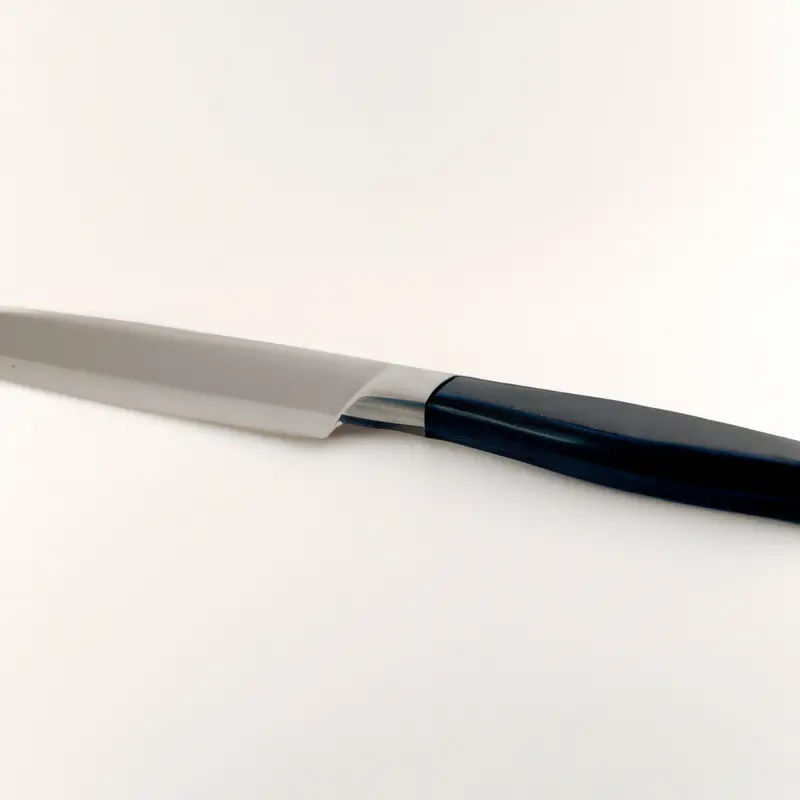
A Symbol of Quality: Hammered Finish Chef Knives as a Status Symbol in the Kitchen
Hammered finish chef knives have gained popularity not just for their durability and performance but also as a status symbol in the kitchen. These knives are an indication of quality craftsmanship and are often associated with skilled chefs who take pride in their cooking.
The unique aesthetics of a hammered finish make it stand out from regular knives and add an elegant touch to any kitchen.
Additionally, investing in a hammered finish chef knife demonstrates the owner’s commitment to cooking and an appreciation for fine tools. Overall, owning a hammered finish chef knife is a statement of expertise and class in the culinary world.
Price vs. Value: Why a Hammered Finish Chef Knife is Worth the Investment
A hammered finish chef knife may come with a higher price tag, but the value it provides makes it worth the investment. These knives are durable and long-lasting, thanks to their sturdy construction.
Furthermore, the hammered finish on the blade reduces friction while cutting, improving performance.
Maintaining a hammered finish chef knife is easy, and its unique aesthetics make it a beautiful addition to any kitchen. Investing in a hammered finish chef knife is a symbol of quality and can also serve as a status symbol in the kitchen.
Though they may be priced higher than normal chef knives, the value they provide in terms of durability, performance, and aesthetics make them a worthwhile investment for any culinary enthusiast or professional chef.
Choosing the Perfect Chef Knife with Hammered Finish: Factors to Consider
When choosing the perfect chef knife with a hammered finish, consider the type of steel used in the blade. Look for high-quality steel that is resistant to rust and corrosion.
The handle material and design should also be considered, as it affects the comfort and grip while using the knife.
Size and weight are crucial factors as well, as the perfect chef knife should fit comfortably in the user’s hand and be well-balanced. Finally, consider the price, as a hammered finish chef knife can be an investment.
A higher price tag often means higher quality and better performance, but it is essential to find the sweet spot between price and value.
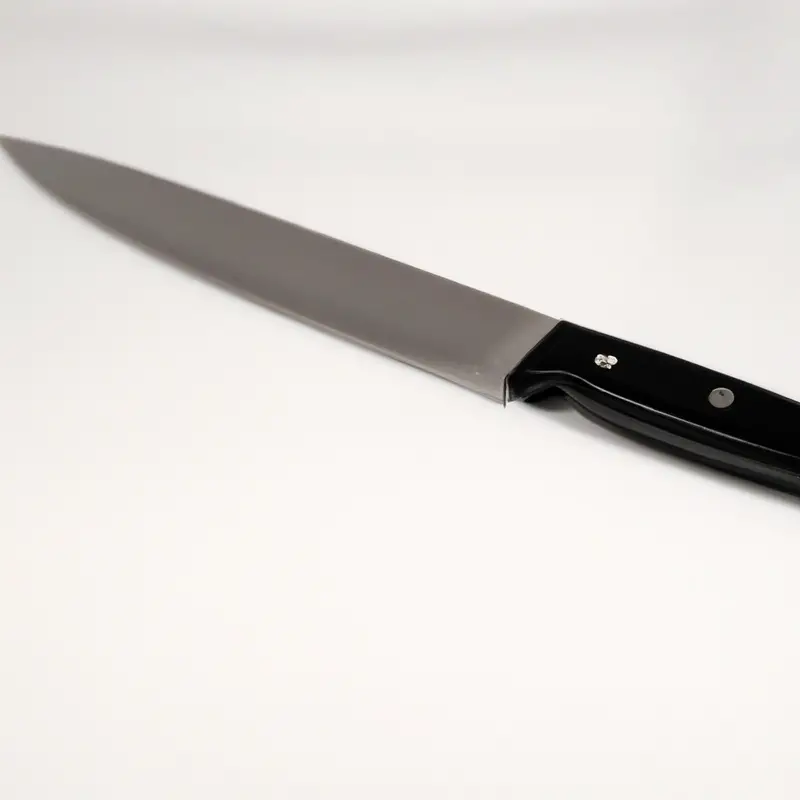
Utilizing a Hammered Finish Chef Knife in Daily Cooking: Tips and Tricks
When it comes to using a hammered finish chef knife in daily cooking, here are some tips and tricks to keep in mind:
- Grip the handle firmly to ensure control and precision while cutting.
- Use a sharpening stone to maintain the sharpness of the blade.
- Cut with a gentle rocking motion and use the tip of the blade for precision cuts.
- Avoid cutting through bones and frozen foods as it can damage the blade.
- Wash and dry the knife immediately after use to prevent corrosion.
By following these tips and tricks, you can better utilize your hammered finish chef knife and enjoy its benefits to the fullest in your daily cooking routine.
Different Types of Hammered Finish Chef Knives: Which One is Right for You?
Different Types of Hammered Finish Chef Knives: Which One is Right for You? There are various types of hammered finish chef knives available in the market, and choosing the right one can be a difficult task.
Some popular options include:
- Tsuchime – A Japanese style knife that is hand-hammered with a unique pattern that resembles flowing water.
- Kuro-uchi – Also known as a “black hammer,” this knife features a rough exterior from the oxidization process used during its production.
- Damascus – Made of layered steel, Damascus knives have a distinctive, wavy pattern that is formed through a process of repeated hammering and folding.
- Togatta – A Japanese style knife that is hammered on one side, giving it a unique texture that improves grip.
Ultimately, the right choice depends on personal preference and the intended use of the knife. It is essential to consider factors such as blade material, handle material, and blade length when choosing a hammered finish chef knife.
A high-quality knife with an ergonomic handle and durable blade will ensure a comfortable, safe, and efficient cooking experience.
Hammered Finish Chef Knives vs. Other High-End Chef Knives: A Comparative Analysis
When comparing hammered finish chef knives to other high-end options, there are several key factors to consider. One advantage of hammered finish knives is their unique appearance and texture, which can add a touch of artistry to your kitchen.
Additionally, the process of hammering can make the steel more durable and less likely to chip or break over time.
Hammered finish knives may also have better food release, as the textured surface helps prevent ingredients from sticking to the blade. This can be particularly useful when slicing soft or sticky foods like cheese or sushi.
However, it’s important to note that not all hammered finish knives are created equal.
Some may be more prone to rust or corrosion without proper care, and the hammering process can potentially weaken the steel if not done correctly. When comparing hammered finish chef knives to other high-end options, it’s also important to consider factors like blade shape, weight, and handle design.
Ultimately, the best choice will depend on your individual needs and preferences in the kitchen.
The History of Hammered Finish Chef Knives: Cultural Significance and Evolution
The hammered finish on a chef knife has a long history and cultural significance in many countries, including Japan where it originated. The traditional process of hammering the blade creates a unique texture that not only enhances the aesthetic value but also improves its functionality.
In Japan, this process is known as tsuchime, and it is considered an art form that dates back centuries.
Traditionally, Japanese blacksmiths would hammer the blade to remove impurities and air pockets, resulting in a stronger and more durable blade. The hammered finish also provided a non-stick surface when cutting, reducing the likelihood of food sticking to the blade.
Over time, the hammered finish became a symbol of quality and status in the kitchen, with many professional chefs seeking out handcrafted knives with this unique texture.
Today, hammered finish chef knives are popular not only in Japan but around the world, with many manufacturers incorporating this technique into their designs. In recent years, there has also been a resurgence in interest in traditional craftsmanship and techniques, leading to a greater appreciation for hammered finish chef knives and their cultural significance.
As a result, many artisanal blacksmiths continue to use traditional methods to handcraft high-quality chef knives that are not only functional but also beautiful works of art.
Overall, the history of hammered finish chef knives is a testament to the importance of traditional craftsmanship and the value of handcrafted objects that have withstood the test of time.
Final Verdict
A chef knife with a hammered finish offers a multitude of advantages that cannot be found in a regular chef knife. The hammering process not only enhances durability and longevity but also improves cutting ability and maintenance.
Its unique aesthetics make it a symbol of quality and a status symbol in the kitchen.
Investing in a hammered finish chef knife is worth the money, as it will last for years and provide incredible value in the kitchen. When selecting a hammered finish chef knife, be sure to consider the different types available and choose one that fits your needs.
With proper care and use, a hammered finish chef knife will become an invaluable tool in your culinary arsenal.
Don’t hesitate to take advantage of this incredible innovation in the world of kitchen cutlery.

